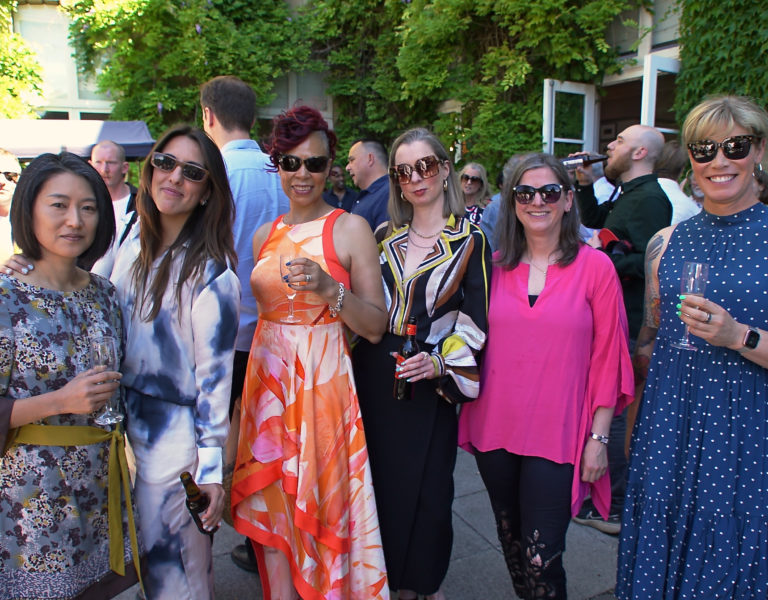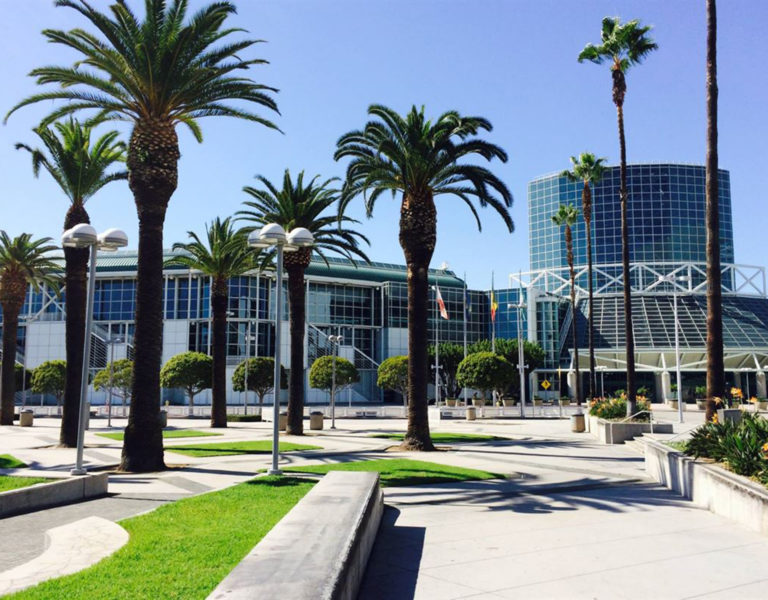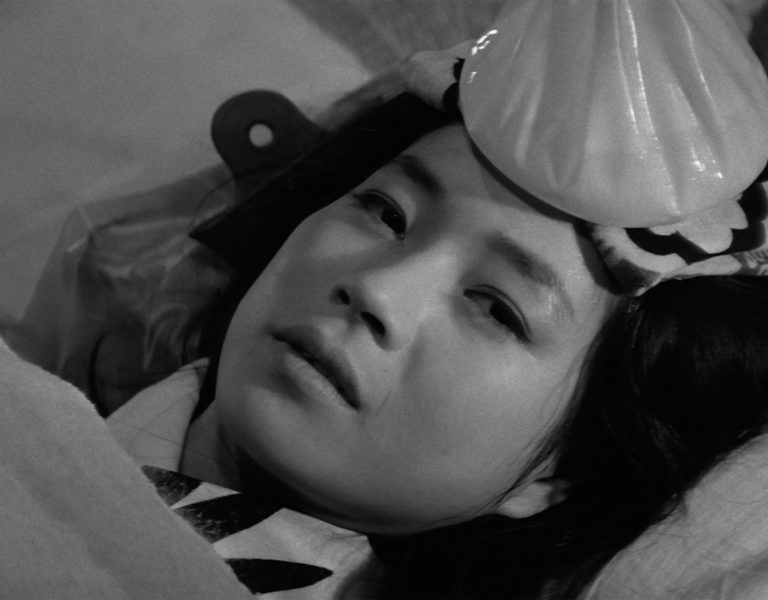With wisps of autumn in the air – or are those simply the tendrils of wildfires? The dampness of late season floods? – calendar time begins to change.
Not only are the days literally shorter (from the standpoint of “light,” anyway – we will leave the existential aspects to you), but, as we’ve noted many times, in the various loci of showbiz around the globe, particularly this one, “award season” gets overlaid with all the fall holidays, and “hurly” is definitely added to “burly,”
So it is that we start this week hearing from more Emmy nominees, though the Emmy awards will come and go about halfway through the web lifecycle of this particular dispatch. We will be reporting on them (particularly the crafts-focused Creative Arts Emmys) in the next column, but in the meantime, before “the envelope please” ends the Schrödinger’s Cat-like suspense of who actually wins, a few more observations from those lucky enough to be nominated.
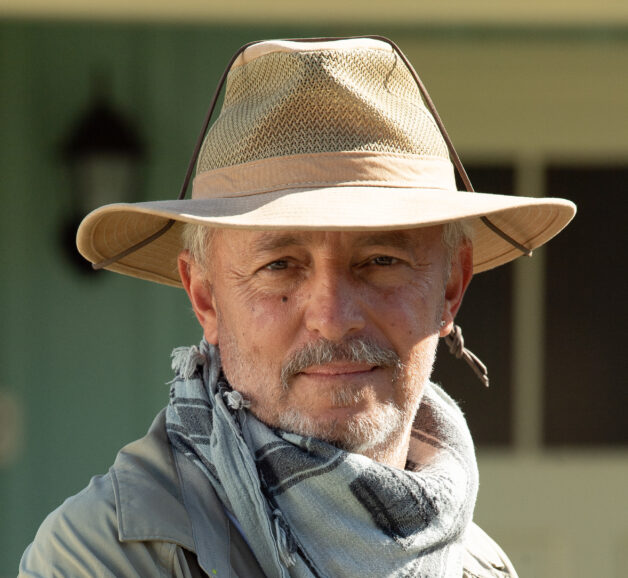
Including, as we’ve done in seasons past, from those who are “cinematography adjacent.” In this case, it’s the sound team from the heavily nominated Dopesick, the Michael Keaton-produced Hulu series about America’s opioid addiction crisis, and the degree to which Perdue Pharma was allowed to keep pushing the drug.
With nods both above and below the line, including for “outstanding series” Checco Varese ASC’s work is likewise up for a statue.
As is the sound mixing work of Ryan Collins and Nick Offord (along with Jay Meagher), who designed sound to complement the emotional journey of Keaton’s lead character, Dr. Samuel Finnix, and his descent into addiction, while complementing Varese’s visuals.
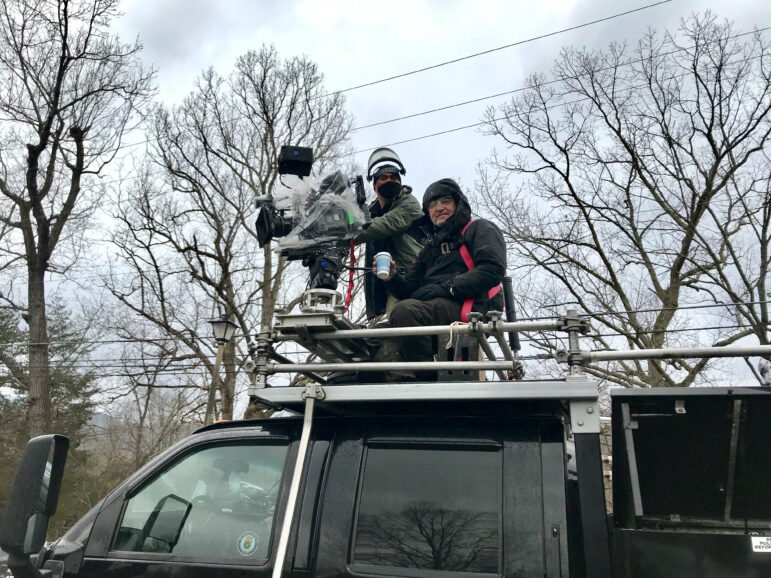
Offord, while referring to the “incredible” cinematography, emphasised that the goal was to “always try and support the story as best we can. That includes playing to the visuals we are seeing on the screen. The score (by previous Emmy nominee Lorne Balfe) we had to work with also played a huge factor in creating that emotional response to what we are visually seeing. We had to create a tone sonically that would support the world of all the characters, and especially Dr. Finnix.”
To which Collins adds that Varese’s “cinematography in Dopesick is absolutely breathtaking. The sound design concept of stripping the sonic life away from the world around Samuel Finnix during his decline into drug addiction was conceived before the sound team saw a single frame. Our aim was for the viewer to have a psychoacoustic response to the shift in environments when his addiction starts. We wanted the sonic environment to be a reflection of Finnix’s experience. Although the visual world around him depicts reality, the sonic world is Finnix’s inner struggle. And when this idea was put into practice it aligned beautifully against Checco’s stunning visuals.”
There are also stunning visuals aplenty in HBO’s documentary series 100 Foot Wave, which chronicles the search by legendary big wave surfer Garrett McNamara, for the Great White Whale of the “100 Foot Wave,” which seems to have been found in the primal breakers of Nazaré, Portugal.
As the show chronicles, McNamara helps pioneer an international surfing scene there, and even surfs a near 80-footer. Though as the international spotlight – and other surfers – descend on the formerly quiet fishing village, he finds that time, and quite literally, tide, keep him from fully sharing in the subsequent record-breaking, and spoils.
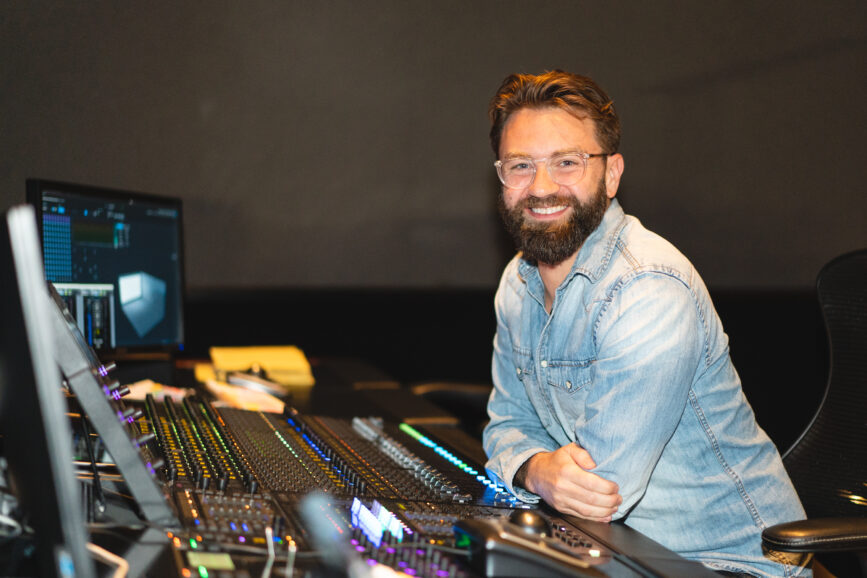
All the while, we follow the travails of McNamara, his family and friends, and his ultimate arrival at a kind of Zen philosophy about this particular “whale,” well-suited to both surfing and the exigencies of 21st-century life.
The series brought acclaimed underwater and surf photographer Mike Prickett his first Emmy nomination, in conjunction with Laurant Pujol, who oversaw a lot of the footage in Nazaré, along with a nod for best overall non-fiction series.
When we caught up with Prickett, it was still early morning in Hawaii where he lives, and his granddaughter eventually joined for part of our Zoom chat. And while a lot of the action was captured with a RED Monstro 8k, “the main camera on set,” he also there was a lot of 16mm and other film (and digital formats) – since Rickett had been documenting Garrett and other surfers for years – all which required remastering, for “all the storyteller stuff,” and the years-long journey of discovery in Portugal.
As for the other parts of the story – triumphant rides, devastating wipe outs, the sudden enveloping by barrels or breaks – one wonders if part of the nomination was based what Prickett, and the crew he oversaw, also invented for the shoot, including a “gyro-stabilized head, remote controlled, mounted on back of a Jet Ski,” which are used both for towing surfers out to the massive waves, and also for rescue should a surfer suddenly be knocked off his or her board, and even knocked out – which happens over the course of the series.
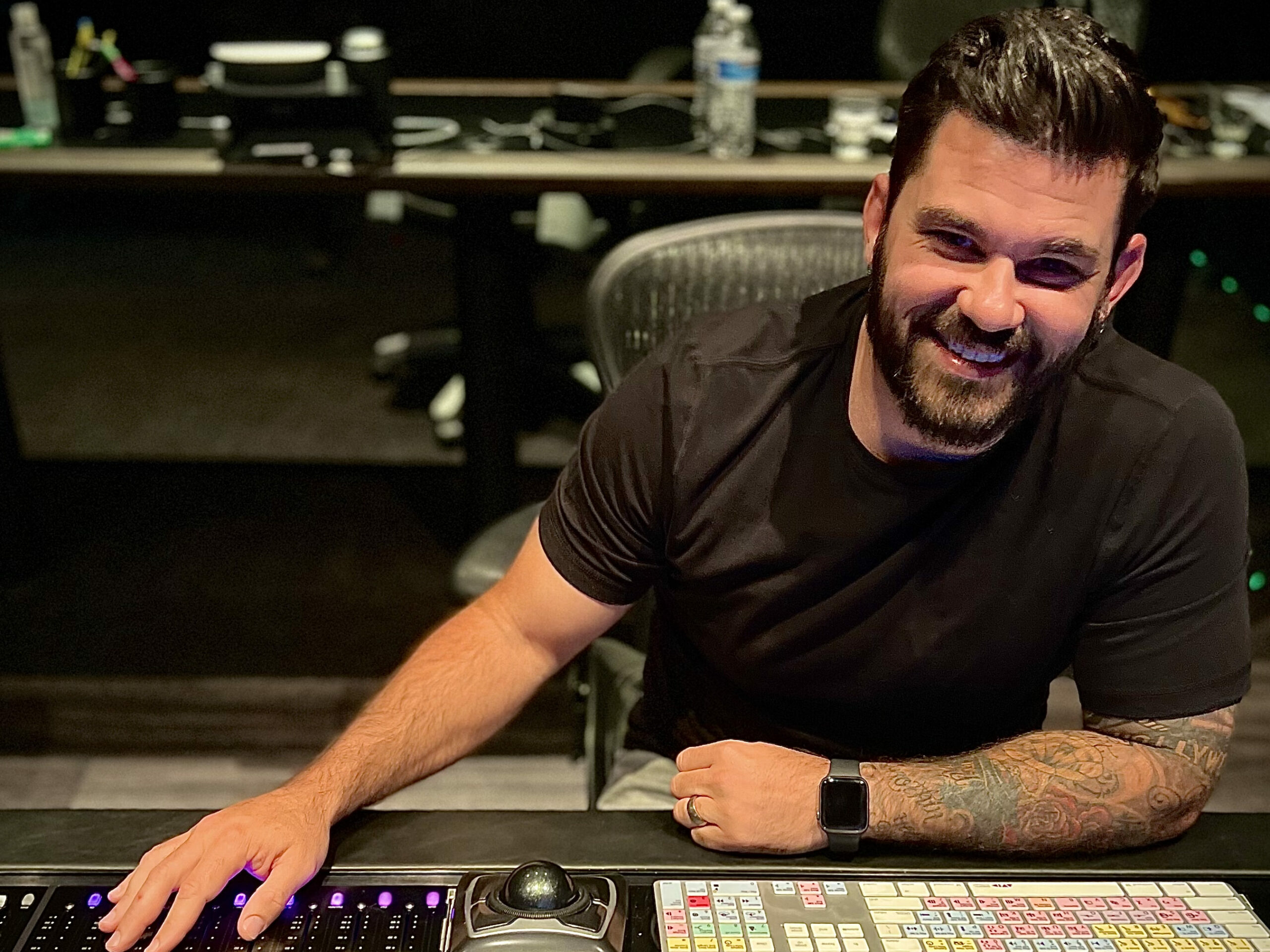
They also “developed a drone that was waterproof – that could take off and land in the water, along with “a waterproof head we hang from helicopters (and) a waterproof scooter that goes underwater like a dolphin. We can put a remote control zoom lens on a Jet Ski. It’s like the future. Kinda like the Jetsons!”
When asked if he was getting patents for any of the devices they invented and refined, he laughed and thought that there probably wasn’t time, given how fast technology is changing anyway.
Regardless of how fast we may all be speeding toward a Jetson-like future, there was some deliberation during the shoot about the lenses that were used, as Prickett lists an All-Star gamut running from Canon to Fujinon Cabrios, Zeiss Supremes, rehoused Leica vintage glass, and Angenieux zooms,
Meanwhile, there were “custom LUTs on all the RED cameras,” and also a DIT who “stayed (in Nazaré) all season,” and to whom Prickett was happy to hand off the panoply of memory cards, shot with different lenses, and different devices.
Meanwhile, rehabbing from a rather heroic injury, where he rescued someone on the cusp of drowning during a dive in Tahiti, and had to shoot to the surface so fast – so that they could both get oxygen – that bubbles from “the bends” made their way to his spinal column (necessitating a decade of relearning to walk, usually with the aid of crutches) Prickett continues to be busy, having worked on NCIS Hawaii, currently “doing two more features” and prepping for the first-ever live capture of big wave surfing to be streamed over the internet.
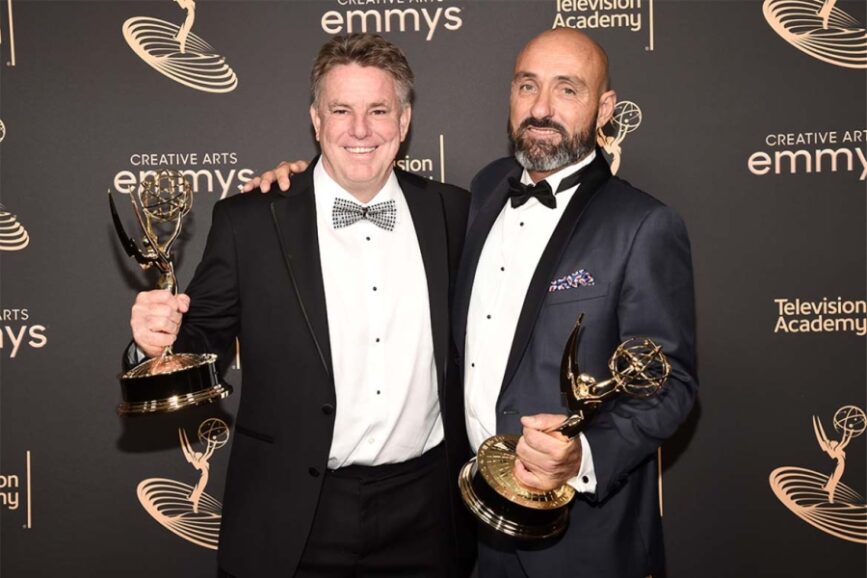
“He’s also prepping for a second season of 100 Foot Wave, by which time win or lose, he will be not only a veteran of aquatic photography, but one of the Emmy rituals, as well. (LATE BREAKING UPDATE: He and Pujol won, on the first night of the Creative Emmy Awards. Pujol said backstage that despite all the invented gear they had, he would often go out on the water “and hope for the best.” In this case, the best happened.)
Also set among the waves, though strictly Pacific ones, and in cities along its shore – in this case, primarily San Francisco – is Apple TV+’s new summer series Surface, from creator Veronica West, where producer and star Gugu Mbatha-Raw treads what almost feels like Gillian Flynn territory, in the story of a woman who has lost all memory of her past life after a suicide attempt, jumping from a ferry boat.
If, indeed, a suicide attempt it was.
Tami Reiker ASC, who did such sterling work in mostly close quarters with the Amazon film One Night in Miami, here had a whole city to play with when shooting the first two episodes, along with director Sam Miller, and says that “shooting in San Francisco was the highlight” of her work on the show. Which might at first seem odd for a series actually set in Baghdad-by-the-Bay (as the city’s late, celebrated columnist Herb Caen called it), until you consider that most of it was actually shot in Vancouver. This wouldn’t be the first production where a Canadian city doubles for somewhere else, but, given that this particular correspondent grew up in the S.F. Bay Area, ATP can confirm that doubling remained fairly savvy, and plausible, throughout.
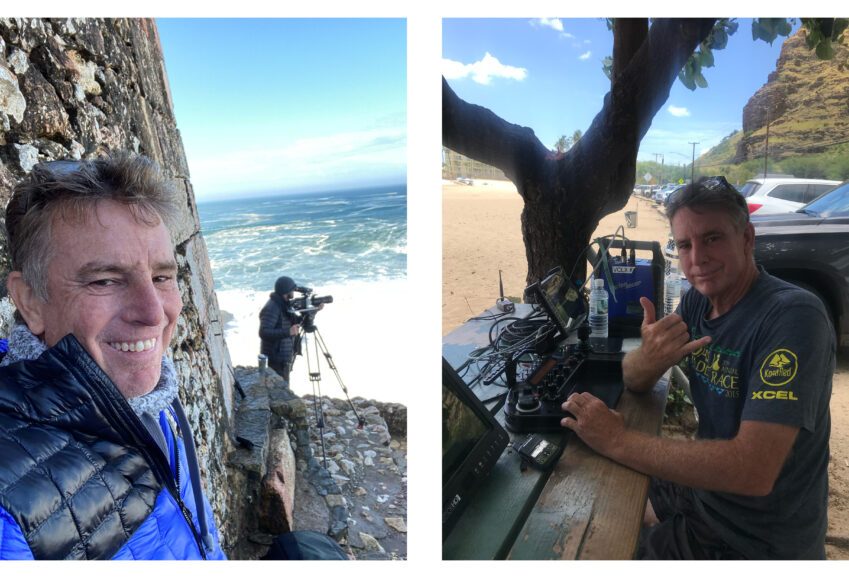
As for actually being on location in SF – which she says “was really quiet,” as they shot there during Covid, and you could “walk everywhere (and) get in any restaurants” – Miller told her she was there for both “the appetizer and the dessert” in her initial episodes, some of which occurred in one of The City’s Ur-settings for high tea (and cocktails), the Garden Court of the Palace Hotel. Reiker says they got “to light all that up,” though finding, initially, that “the color wasn’t right,” but quickly able to address such spectral issues with “Vortex LED light – they’re like a disc (and) there’s no cable. And it’s so fast and beautiful.”
Miller, meanwhile, stayed for the entire multi-course meal, as creative director after the four episodes he directed, to “hold the look” for the show he’d established with Reiker, watching dailies, and speaking to the subsequent directors and DPs, including “Elie Smolkin (who) was there from the beginning,” and being from Vancouver, was also “helpful in recommending crew.”
Whether in SF, or doubling for it in Vancouver – which, at the height of Covid meant a two-week quarantine when relocating, so there was minimal “back and forth” – Reiker and Miller referred to a lot of iconic films to refine the look they were going for, including Eyes Wide Shut, presumably for its shared themes of collusions among the wealthy, and its “Hitchcock feel,” along with Hitchcock’s own SF-set masterpiece, Vertigo, for “the vibe and the feel.”
Not everything they watched was set among the rolling hills (and cable cars), neon signs of Chinatown, and restored Victorians whose looks they wanted to recreate. Reiker mentions another favorite, The Diving Bell and the Butterfly, where director (and painter) Julian Schnabel “used his own eyeglasses” in front of the camera, to show, even more specifically, some of the distortions from his main character’s POV. Similarly, then, Reiker found herself holding prescription glasses and “running with the lens, sharing the monitor…twisting and turning them, getting the reflection of the overhead lights,” as Mbatha-Raw’s Sophie is returning “to her memory of herself,” after waking from her near drowning.
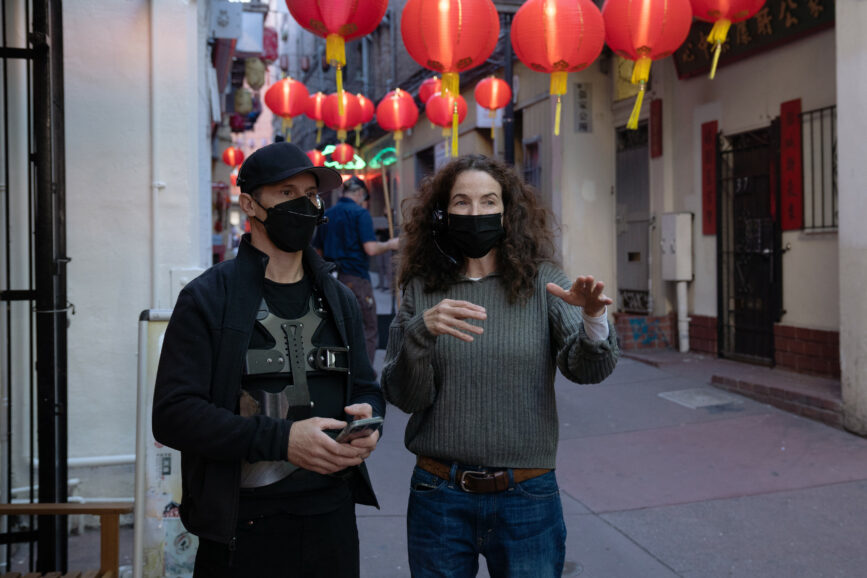
More practically – though still unusually – they also used a lot of Clairmont “swing and shift lenses,” along with Blackwing7 prime glass (with its own propensity for controlled distortions), to allow for a variety of effects, reflected glimpses, and more. She and Miller “both really fell in love with the swing-and-shift,” or perhaps for Reiker, back in love, as “we used to use them in music videos a long time ago.”
Though not with the ALEXA Mini LFs deployed for Surface.
Reiker also mentions the collaboration with production designer, Jeremy Stanbridge, who she and Miller prepped with in Vancouver, and who “lights also; he designed all those beautiful lights in the house,” namely, the Victorian that Sophie shares with her evasive husband.
Standbridge put in tungstens for source light, which made “big soft sources” enabling them to “leave our soft boxes,” during those sequences.
Which may bring us to as apt a metaphor as we can find, in terms of leaving the “soft boxes” of summer behind, for the lighting swirls, and perhaps tempests, of the seasons ahead.
We will see you on the yonder side of our first big award swirl, next column. @TricksterInk / AcrossthePond@gmail.com
